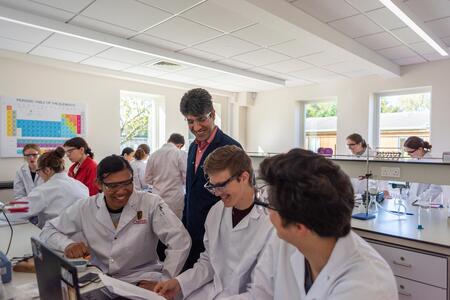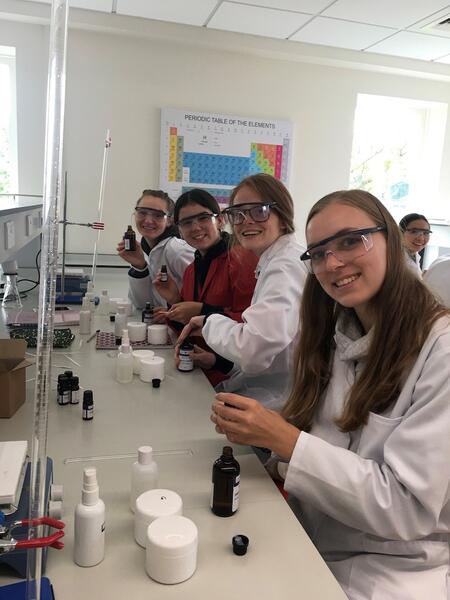 The BISC’s brand new Science and Innovation Labs were officially opened by Peter Field, HM Lord Lieutenant of East Sussex, on Saturday, June 29th as part of the BISC’s 25th anniversary celebrations. This fall, this state-of-the-art facility welcomed eager BISC Science students for its first formal lectures and practical sessions.
The BISC’s brand new Science and Innovation Labs were officially opened by Peter Field, HM Lord Lieutenant of East Sussex, on Saturday, June 29th as part of the BISC’s 25th anniversary celebrations. This fall, this state-of-the-art facility welcomed eager BISC Science students for its first formal lectures and practical sessions.
The BISC has been running a Science stream since 2016, and the courses have been very successful in attracting new students and diversifying the overall student demographic on campus. Whereas previously students in the Biology and Chemistry streams had to use the laboratory facilities at Battle Abbey School, this new dedicated lab space on campus, just a stone’s throw from Bader Hall, will allow the Castle to expand its course offerings even further. The BISC plans to offer a whole new range of STEM and material science-based courses in the very near future.
As Science at the BISC is a relatively new venture for everyone concerned, The Castle Herald decided to speak to members of the Science faculty to see how we might go about creating a culture of Science at the BISC.

Dr. McKenzie, who offers regular Nature Walks for students around the Castle gardens and grounds in her free time, is also keen not to overlook the opportunities to learn on the students’ very doorstep. In her most recent lab session, her Biology students used projection microscopes to examine dragonfly exuvea that they had collected from marshland on the Castle estate itself. “The gardens and grounds of the Castle Estate provide habitats for all manner of flora and fauna,” she says. “It’s a Living Lab.”
Our modern science lab facilities have made it possible for students to develop valuable laboratory skills, and become proficient in the use of technical equipment and scientific instruments at the Castle. Chemistry professor Dr. Danesh Roudini has already made good, practical use of his new surroundings. “As part of a recent organic chemistry class, I asked my students to manufacture shampoo using essential oils,” he said. “It’s a popular practicum because my students get to take their learning home with them!”
Ioana Sotuela, who lectures in both Physics and Astronomy at the Castle, is eager to point out that students’ learning should be integrated to ensure neither the Sciences nor Humanities exist in isolation. She has planned a lunchtime session in Week 11 where her Physics students will be asked to prepare and present experiments to the wider Castle community. This student outreach initiative also continues for her Astronomy class, who have been asked to deliver a presentation on their first-year research projects at a special event, to be held at the BISC Science and Innovation Labs, that will be open to both the Friends of Herstmonceux and the general public.
Dr. Christian Lloyd, the BISC’s Academic Director, is excited by the potential of the brand-new Con-Ed Science stream at the BISC. “Concurrent Education at the Castle is already a fantastic opportunity for our students to step outside their frames of reference,” he says. “And the relatively small size of our cohort means our Con-Ed Science students will work more closely with Arts students than perhaps they would have on main campus.” The BISC’s Con-Ed Science students’ experience is enriched further by their unique practicums. The Castle has arranged for them to participate in Science classes at nearby Battle Abbey School in the Winter Term, so they can even experience what it is like to teach the Sciences at the secondary-level.